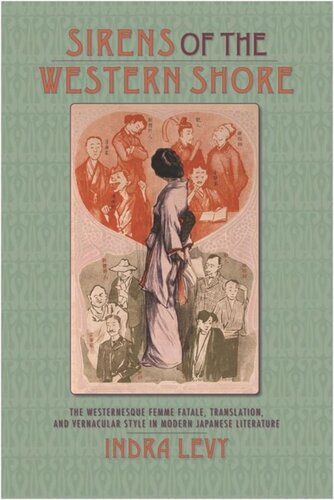

Most ebook files are in PDF format, so you can easily read them using various software such as Foxit Reader or directly on the Google Chrome browser.
Some ebook files are released by publishers in other formats such as .awz, .mobi, .epub, .fb2, etc. You may need to install specific software to read these formats on mobile/PC, such as Calibre.
Please read the tutorial at this link: https://ebookbell.com/faq
We offer FREE conversion to the popular formats you request; however, this may take some time. Therefore, right after payment, please email us, and we will try to provide the service as quickly as possible.
For some exceptional file formats or broken links (if any), please refrain from opening any disputes. Instead, email us first, and we will try to assist within a maximum of 6 hours.
EbookBell Team

0.0
0 reviewsThe cross-fertilization of languages, cultures, and literary forms that produced modern Japanese literature also gave birth to a new literary archetype: the "Westernesque femme fatale," an alluring figure who is ethnically Japanese but evokes the West in her physical appearance, lifestyle, behavior, and use of language. Tracing the genesis of this archetype from her first appearance in the vernacularist fiction of the late 1880s to her role in Naturalist fiction of the mid-1900s and her embodiment by the modern Japanese actress in the early 1910s, Sirens of the Western Shore identifies the Westernesque femme fatale as the hallmark of an intertextual exoticism that prizes the strange beauty of modern Western writing. By illuminating the exoticist impulses that informed this archetype, Indra Levy offers a new understanding of the relationships between vernacular style and translation, originality and imitation, and writing and performance.
Indra Levy introduces a new archetype in the study of modern Japanese literature: the "Westernesque femme fatale," an alluring figure who is ethnically Japanese but evokes the West in her physical appearance, lifestyle, behavior, and, most important, her use of language. She played conspicuous roles in landmark works of modern Japanese fiction and theater.
Levy traces the lineage of the Westernesque femme fatale from her first appearance in the vernacularist fiction of the late 1880s to her development in Naturalist fiction of the mid-1900s and, finally, to her spectacular embodiment by the modern Japanese actress in the early 1910s with the advent of Naturalist theater. In all cases the Westernesque femme fatale both attracts and confounds the self-consciously modern male intellectual through a convention-defying use of language.
What does this sirenlike figure reveal about the central concerns of modern Japanese literature? Levy proposes that the Westernesque femme fatale be viewed as the hallmark of an intertextual exoticism that prizes the strange beauty of modern Western writing.
By illuminating the exoticist impulses that gave rise to this archetype, Levy offers a new understanding of the relationships between vernacular style and translation, original and imitation, and writing and performance within a cross-cultural context. A seamless blend of narrative, performance, translation, and gender studies, this work will have a profound impact on the critical discourse on this formative period of modern Japanese literature.